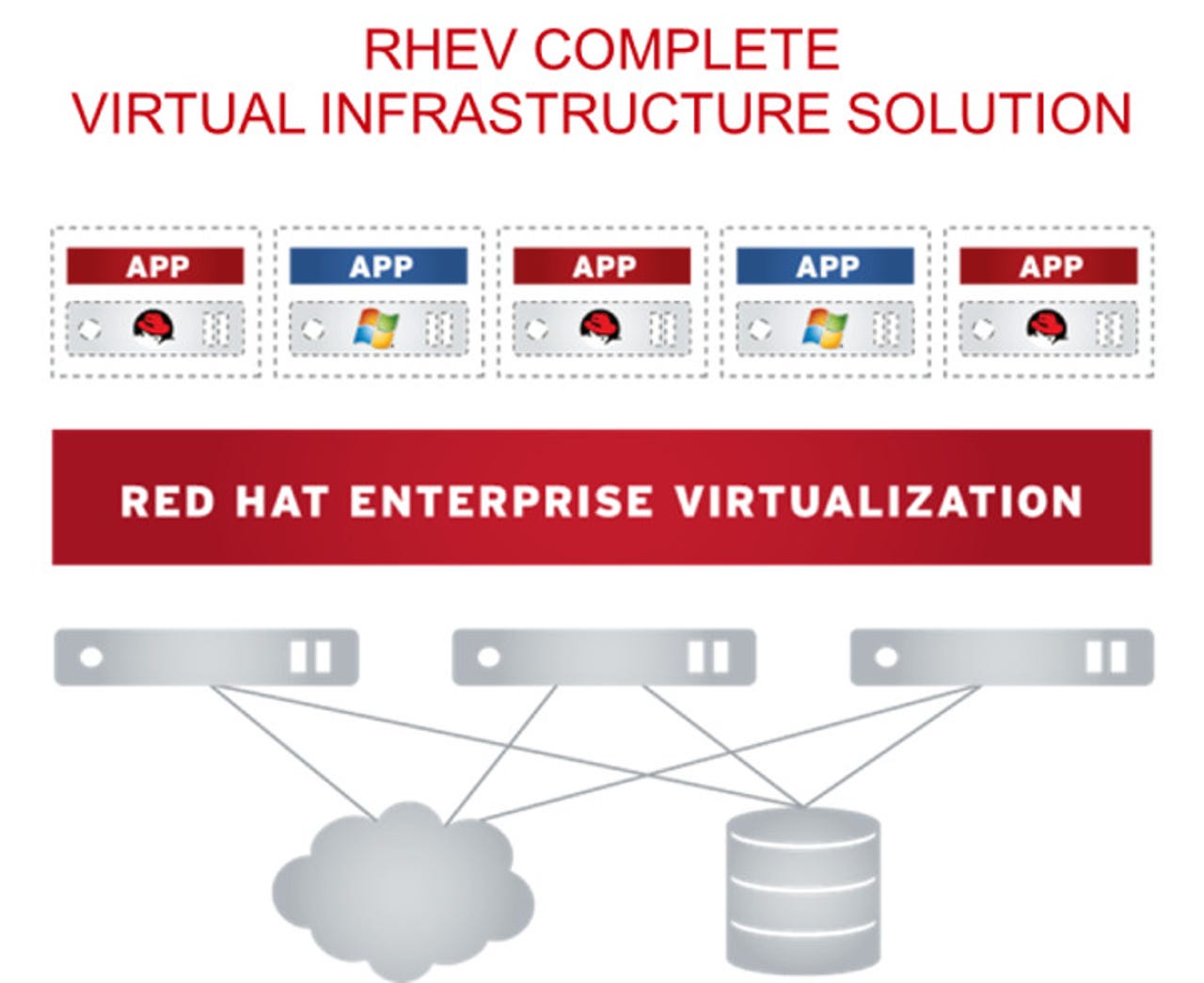Red Hat updates its KVM virtualization program

Today's data centers and clouds run on virtualization. The leading business Linux provider Red Hat knows that so it's released an update to its Red Hat Enterprise Virtualizaiton (RHEV) project: RHEV 3.6.

RHEV is based on Linux's built-in virtualization engine: KVM. While RHEV can be used for desktops and servers, Red Hat has focused on improving it for servers. After all, that's where the clouds, and their income, are.
With this release, Red Hat claims it has increased performance, scale, and security for high-intensity Linux workloads. The immediate target though is to encourage businesses to migrate from VMware Sphere to RHEV by including improved user experience and management tools to help reduce cost and time of VMware migrations by eliminating the need for an expensive third-party migration tools.
The complete new feature list includes:
Increased Performance and Scalability
- Hotplug memory support: Provides dynamic, one-click memory scaling, working with underlying infrastructure to give an application more memory "on the fly" while avoiding disruption to the application runtime.
- PCI device assignment: Enables administrators to directly assign a physical adapter or device to a virtual machine, allowing for near bare-metal performance for graphics and networking-intensive computing.
Security Updates & Risk Management
- Host Update Manager: Streamlines the patch release process across the virtualized environment through integration with Red Hat Satellite, a popular systems management program.
- Object Health Status: Provides visibility into external system health events, such as issues with storage, CPU, server or hard-drive performance, via the Red Hat Enterprise VIrtualization interface. This feature alerts admins to events that may cause downtime or negatively impact virtual machine performance, so they can proactively manage risk and potential downtime.
Simplified VMware Migration
- Virtual machine-to-virtual machine (Virt-v2v) Integration: Enables customers to identify critical Linux workloads to move to Red Hat Enterprise Virtualization by connecting directly to vCenter and providing simple click-through steps to migrate the workload over. This select workload migration strategy can lower total cost of virtualization and improve performance of mission-critical Linux workloads without the pain of rip and replace.
In a statement, Gunnar Hellekson, RHEV's director of Product Management, said, "The simplified workload migration introduced in this newest release of Red Hat Enterprise Virtualization enables users to combine existing investments and move away from a fully proprietary virtualization platform to implement a multi-hypervisor strategy."
RHEV3.6 is available as a standalone offering, as an integrated offering with Red Hat Enterprise Linux, and as part of a comprehensive solution called Red Hat Cloud Infrastructure. Existing subscribers can upgrade to version Red Hat Enterprise Virtualization 3.6 through the Red Hat Customer Portal.
Look out VMware. Red Hat is coming for you.
Related Stories: